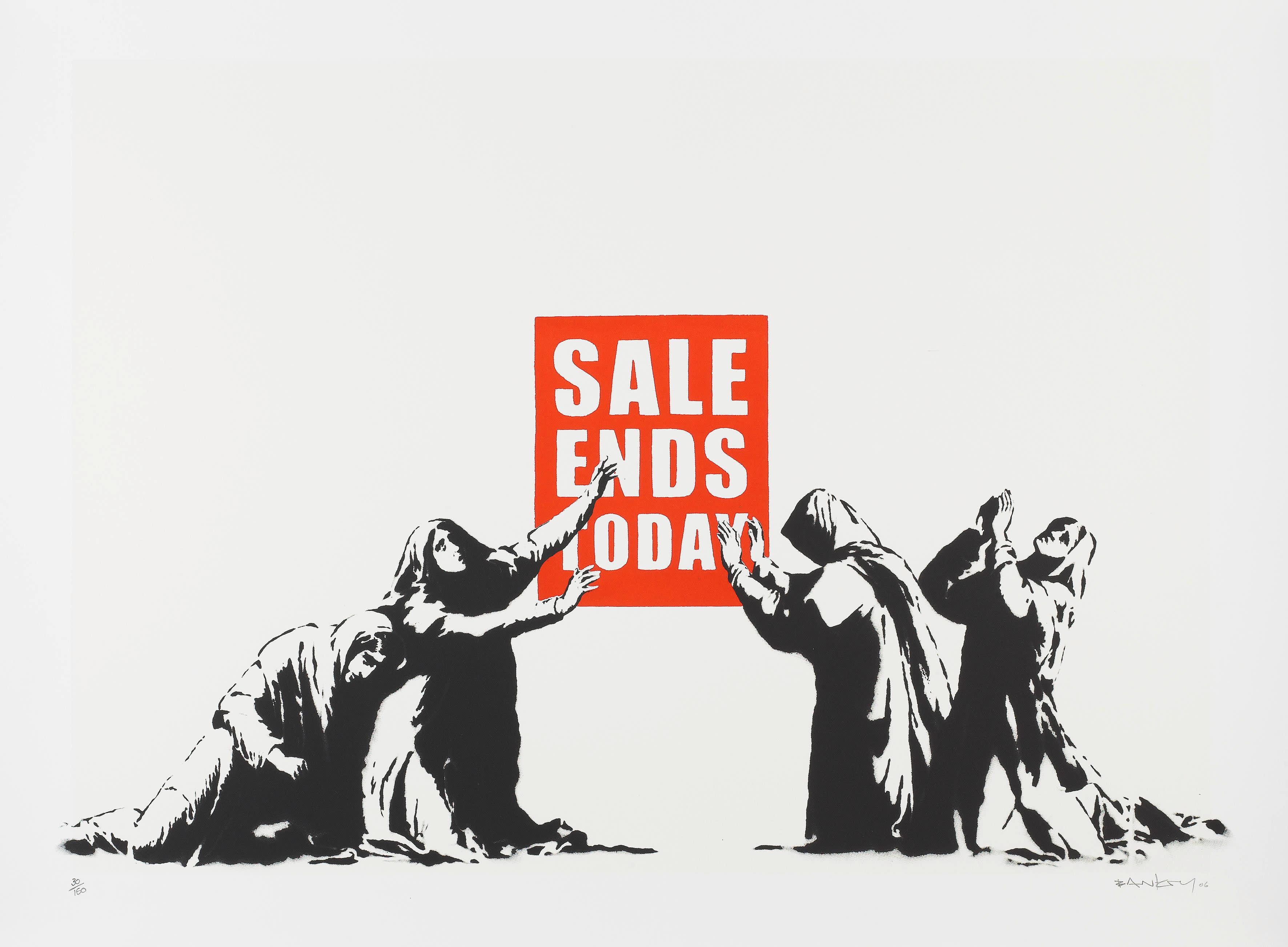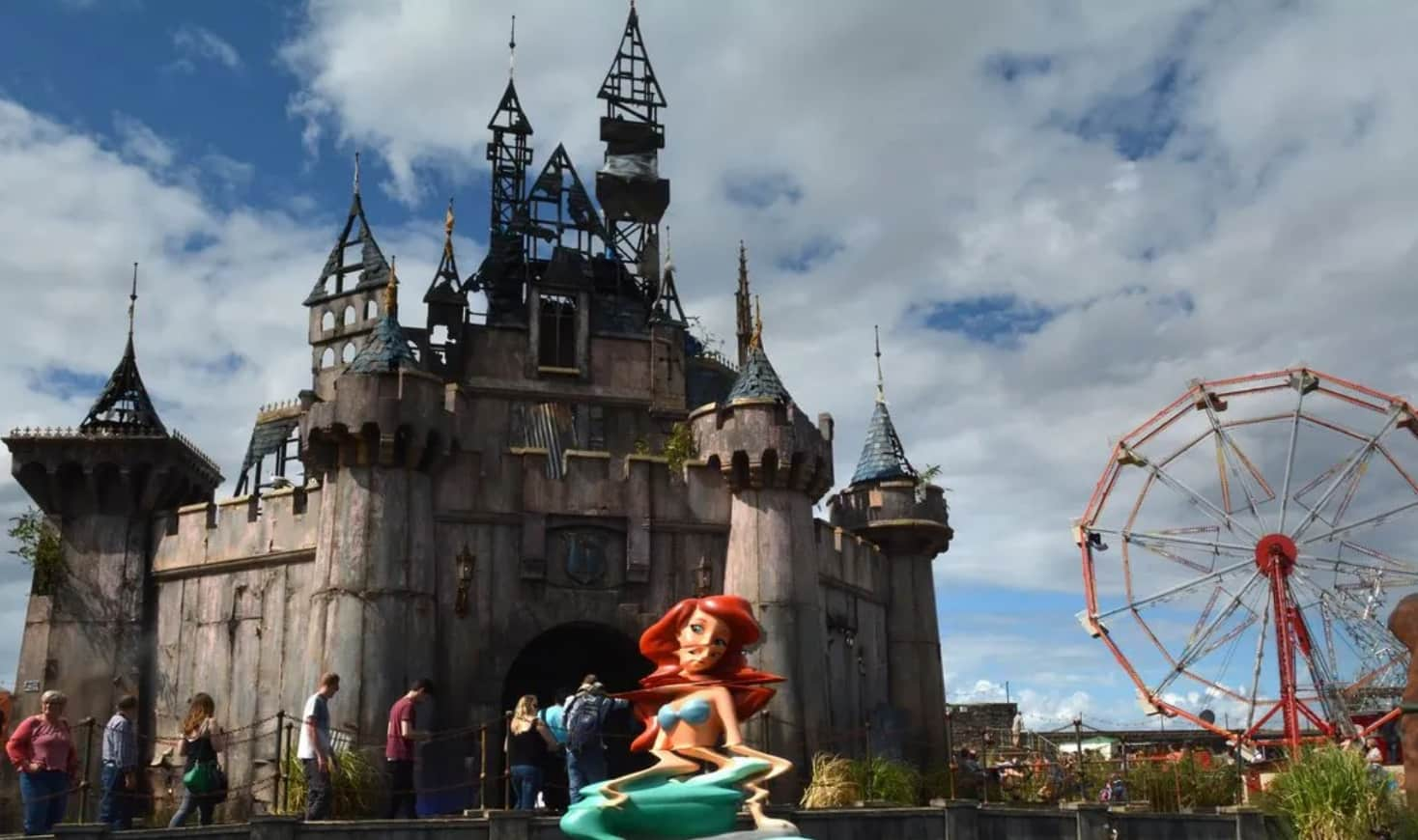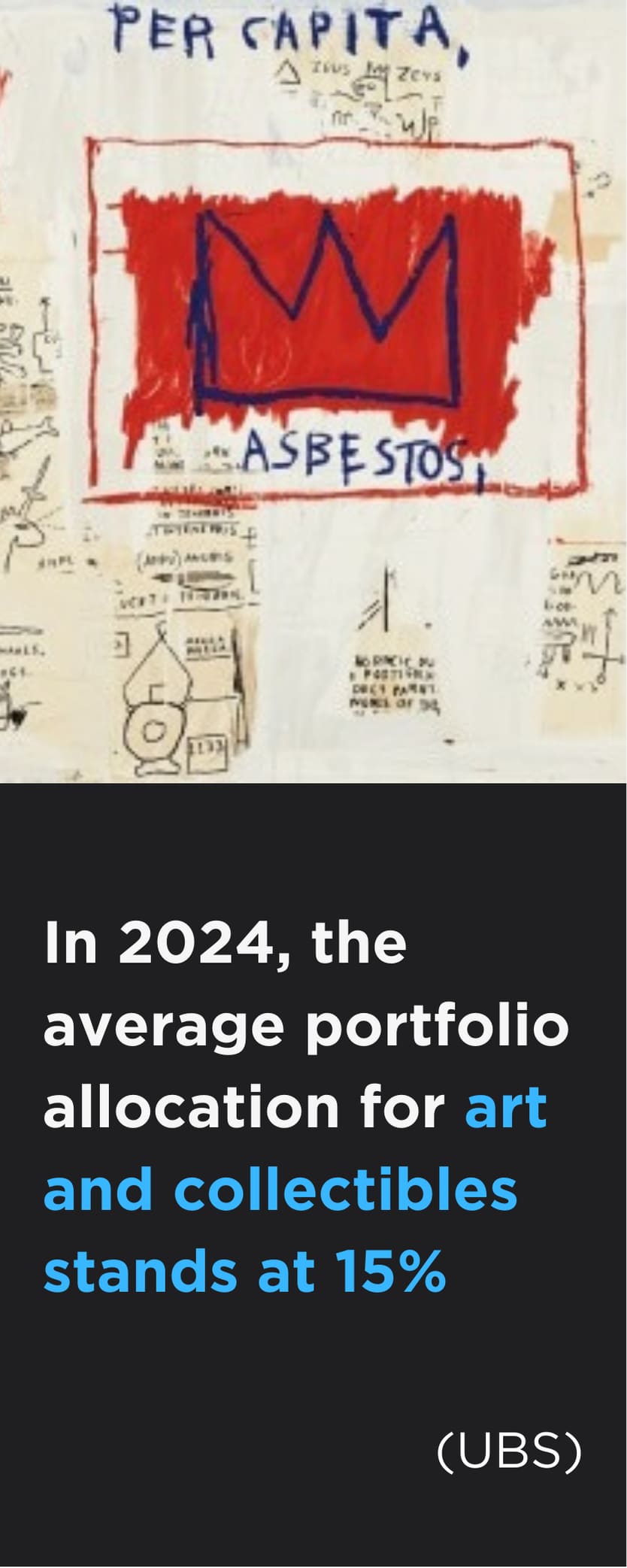With its darkly satirical take on consumer culture, entertainment as distraction, environmental degradation and political apathy, the dystopian Banksy Dismaland theme park left a lasting impression. Join us as we explore how the anonymous street artist’s seaside exhibition Dismaland still resonates today.
What Was Dismaland? The Artistic Vision
In August 2015, Weston-Super-Mare, a sleepy seaside town in Somerset, England, became a leading destination for art lovers and celebrities alike when it was transformed into a Banksy Disneyland style theme park with a subversive twist. Named ‘Dismaland’, Banksy described his latest, highly secretive art project in a rare interview with The Guardian as “a festival of art, amusements and entry-level anarchism”. Built on the site of the abandoned Tropicana lido that Banksy visited every year during his childhood, overnight this quaint town, just 18 miles from Bristol, had become host to a dystopian art installation that turned the British seaside experience on its head, presenting a sinister take on Disneyland firmly aimed at adults.
Open for just five weeks, the Banksy theme park quickly became one of the art world’s hottest tickets. Billed as “the UK's most disappointing new visitor attraction”, some 150,000 guests, including Brad Pitt, Jack Black and Mark Ronson, made the pilgrimage to Weston-Super-Mare to see the show.
Described, retrospectively, as the art phenomenon of the year, Banksy’s artistic vision was clear. In his typically absurdist style, his experimental project broke the mould of a traditional art exhibition in every way and caused nothing short of a furore. What was the meaning of Banksy’s Dismaland, frequently referred to as “dismal land” due to its profoundly depressing themes? At its heart, it was a social commentary on topics the artist cared deeply about, including anti-consumerism, celebrity culture, immigration and law enforcement, which remain integral to his oeuvre today.
Speak about Banksy to a Maddox Art Advisor today, and learn why invest in the artist.
Many of the works on show were created by Banksy himself, including the immersive Dismaland Castle centrepiece, a decrepit riff on Sleeping Beauty’s castle at Disneyland, and a crashed pumpkin carriage containing Cinderella’s lifeless body that appeared to reenact the death of Princess Diana. Not all the exhibits were his handiwork, however. Banksy collaborated with more than 50 Dismaland artists to create the frequently bizarre works and installations, which included a pickled unicorn by Damien Hirst, Bill Barminski’s airport-style security set up at the entrance, entirely made out of cardboard, and a shop offering Pocket Money Loans at 5,000% APR courtesy of Darren Cullen.
Among the most memorable and affecting Banksy installations at Dismaland was the ‘Boating Pond’. Modelled on the English Channel and featuring four coin-operated, remote-controlled boats, three filled with refugees, the fourth with police, this biting commentary on the European migrant crisis couldn’t have been more Banksy.

Reason 1: Dismaland, the Banksy Installation, Still Represents Everything the Artist Stands For
Ever since the very first Banksy stencils in Bristol, the street artist has used his art to express his opinions and emotions, and critique social injustices. Secretive, disruptive and purposefully contradictory, the dystopian vision he presented at Dismaland was a direct reflection of himself as an artist — a burst of reality filled with apathy, cynicism and strong social, political and humanist messages.
The opening of the Banksy theme park coincided with one of the strangest periods in recent political history, just before the UK voted yes to Brexit and Donald Trump became president of the USA. The issues presented at Dismaland — immigration, intolerance, the sexual harassment of women and police brutality, among others — were timely and strangely prescient, exemplifying how art can be a powerful tool for activism, create a pause for reflection and drive social change.
Banksy is no stranger to utilising the element of surprise in his work, and Dismaland was shrouded in secrecy. Only revealed to the press two days before opening, Banksy’s dystopian theme park was as elusive as the artist himself. It is reported that only four members of the North Somerset council were aware of the true nature of the project, whilst Weston-Super-Mare residents were led to believe that the vast construction site stretching across the beach was a set for a Hollywood crime thriller called Grey Fox.
However, it was not the secrecy of the project alone that mirrored the street artist’s identity. Dismaland was infamously inflammatory, and Banksy doesn’t shy away from provocation. From paparazzi shamelessly photographing the lifeless body of Cinderella to a figure clad in butcher’s overalls making lasagne from the prancing horses on the carousel, riffing on the horse meat scandal in Britain at the time, the installations within the park were as scandalous as they were thought-provoking.
At the core of Dismaland there was also an inherent paradox. Visitors could purchase their very own anti-consumer experience, whilst also queuing politely to learn how to rebel against the status quo. As the artist himself described it, Dismaland was “a place where you can get your counterculture easily available over the counter. A theme park for the disenfranchised, with franchises available.”

Reason 2: The Dismaland Bemusement Park had a Lasting Impact
In this age of mass media and digital distractions, Banksy’s subversion of the traditional Disney amusement park model proved that there will always be a strong appetite for Contemporary art that stimulates and inspires conversation.
The artist has created many prominent works in unusual locations, including 2021’s ‘The Great British Spraycation’, a series of murals that appeared across the British coast and shone a light on neglected resort towns in Britain. The cultural impact of Dismaland put the small town of Weston-Super-Mare on the map and brought in over £20 million for the surrounding area, three times as much as initially projected.
Its positive impact didn’t stop there, either. All the materials used in the construction of Dismaland were recycled and used to make shelters for homeless immigrants. And, in 2022, one of the boats from Banksy’s ‘Floating Pond’ was auctioned during Miami Art Week, with 50% of the proceeds going to Choose Love, an organisation that provides humanitarian aid to refugees around the world.
By turning art viewing into an inclusive experience, Banksy also presented a way of engaging with art in a more active and expressive way. Still a popular topic of conversation, both within and outside of the art world, the street artist managed to confound the critics by creating something very, very British that was packed with exciting new artists. It also celebrated a new style of art, dubbed “post-modern” by Banksy, that gets people excited. “We have a new medium for sharing visuals that rewards novelty, insight and humour, but also recognises technical skill in a way modern art has ignored for fifty years,” said the artist during a 2015 discussion about the Banksy amusement park.
Is Dismaland still open? And if not, what happened to Dismaland? Sadly for all those who couldn’t get tickets, Banksy’s doom-laden theme park disappeared as suddenly as it arrived. Dismantled five weeks after opening, its positive impact has, however, endured. While many critics disregarded Dismaland as a mere publicity stunt, Banksy’s dystopian theme park was much more than just an art exhibition and it lives on in the collective memory of the British public because of how unexpectedly brilliant it was.

Reason 3: The Meaning Behind Dismaland is Still Politically and Socially Relevant
Banksy has a knack for creating newsworthy art that captures prevailing moods, comments on political dramas and brings societal issues into sharp focus. Many of the themes touched upon at the Dismaland bemusement park remain important issues and are perhaps even more pertinent in today’s social and political climate, from consumerism and environmental degradation to war, government surveillance and the ongoing refugee crisis.
“Banksy’s artwork, his diverse market and, of course, his antics continue to remind me that the best art is always a little bit outside the norm,” says Maeve Doyle, the internationally renowned art critic and Artistic Director of Maddox Gallery. “Offering sharp critiques on an array of contemporary issues, Dismaland remains Banksy’s largest-scale art project. It challenged viewers from all over the world to confront some very uncomfortable truths.”
Reason 4: The Satirical Banksy Disney Installation was a Catalyst for his Rise to Stardom
The demand for tickets for Dismaland was incredibly high, with the website crashing repeatedly and one disgruntled user tweeting, "It's easier to buy tickets to see the Beatles than tickets to go to #Dismaland". A global phenomenon, some of those who were lucky enough to secure a Dismaland ticket travelled halfway across the world to visit, with locals queuing in their hundreds along the seafront to get in.
Tickets were so sought after and difficult to obtain that Banksy’s art experienced a significant boost in demand following the opening of Dismaland in August 2015, with the number of lots sold at auction increasing by 55% and the first Banksy-dedicated auction in 2016 seeing 39% of lots exceed their estimates. Furthermore, Banksy's average price index in the print category nearly doubled after Dismaland, with 61% of his auctioned artworks selling above estimate.
Back in 2015, the artist was just beginning to understand the power of social media to spread the gospel of Banksy. On 21 August 2015, he posted an image of the Dismaland logo, a play on the original Disneyland name and logo, attracting more than 94,000 likes. In August 2024, when he posted a photograph of a new work at London Zoo - part of a series of animal-themed stencils that popped up all over London during the summer of 2024 - that number had risen to 1.1 million. Dismaland’s strange legacy has undoubtedly fuelled the public's appetite for Banksy’s work over the nine years that separated the two images, a phenomenon that has become known as the ‘Banksy boom’.
Combining surprise, impact, scale and unprecedented levels of enthusiasm, Dismaland’s impact on popular culture and the art world continues to spark interest and debate. It has also inspired other activists and street artists like Banksy to use creative mediums to address societal problems. A catalyst for his rise to stardom, with Dismaland, Banksy created the perfect media storm and the most talked-about art event of the year.

Conclusion: Memories and Legacy of Dismaland
Dismaland was a runaway success, certainly, but it was not without its controversies. The crashing of the website due to the deluge of visitors wanting tickets led to accusations of Banksy deliberately trolling members of the public. The initial critical responses to the Banksy theme park were also divided, with Ben Luke of The Evening Standard comparing Dismaland to clickbait, “momentarily arresting, quickly forgotten”. Others, however, revelled in its absurdity, with The Independent’s Chris Green describing it as “deeply unsettling, yet bizarrely entertaining” and Mark Hudson marvelling at Banksy’s “ability to sum up an idea in an unforgettable, and grimly hilarious image” in The Telegraph.
Minnesotan artist Brock Davis created a total of 18 pieces for Banksy’s self-styled bemusement park. In an interview for CBS News, he struck back at criticism of the show being heavy-handed in its anti-corporate, anti-Disney messaging: “I think that the show is very true to what we see Banksy already doing in his work. The works are all very different from each other, yet it's very cohesive, too. It's a very unique way to do an exhibition.”
The positive legacy left by Banksy’s art installation can still be felt in Weston-Super-Mare. In 2022, a towering ‘See Monster’ art structure popped up at the town’s Tropicana lido for eight weeks, the same space that hosted Dismaland. A multi-million-pound revamp of the Tropicana is set to be completed by 2025, with plans for a £1 billion expansion and regeneration of the seaside town announced in 2024. Nowhere, it seems, is immune to the Banksy effect, with the frenzied reaction to Dismaland marking an important stage in the artist’s journey to becoming the international icon he is today. Whether spoken of with fond nostalgia or used as a benchmark for outrageous art, Dismaland continues to remain central to Banksy’s practice.
Explore more about Banksy and similar impactful art projects.
Discover available art, prints, memorabilia or ways to remember Dismaland today.
















